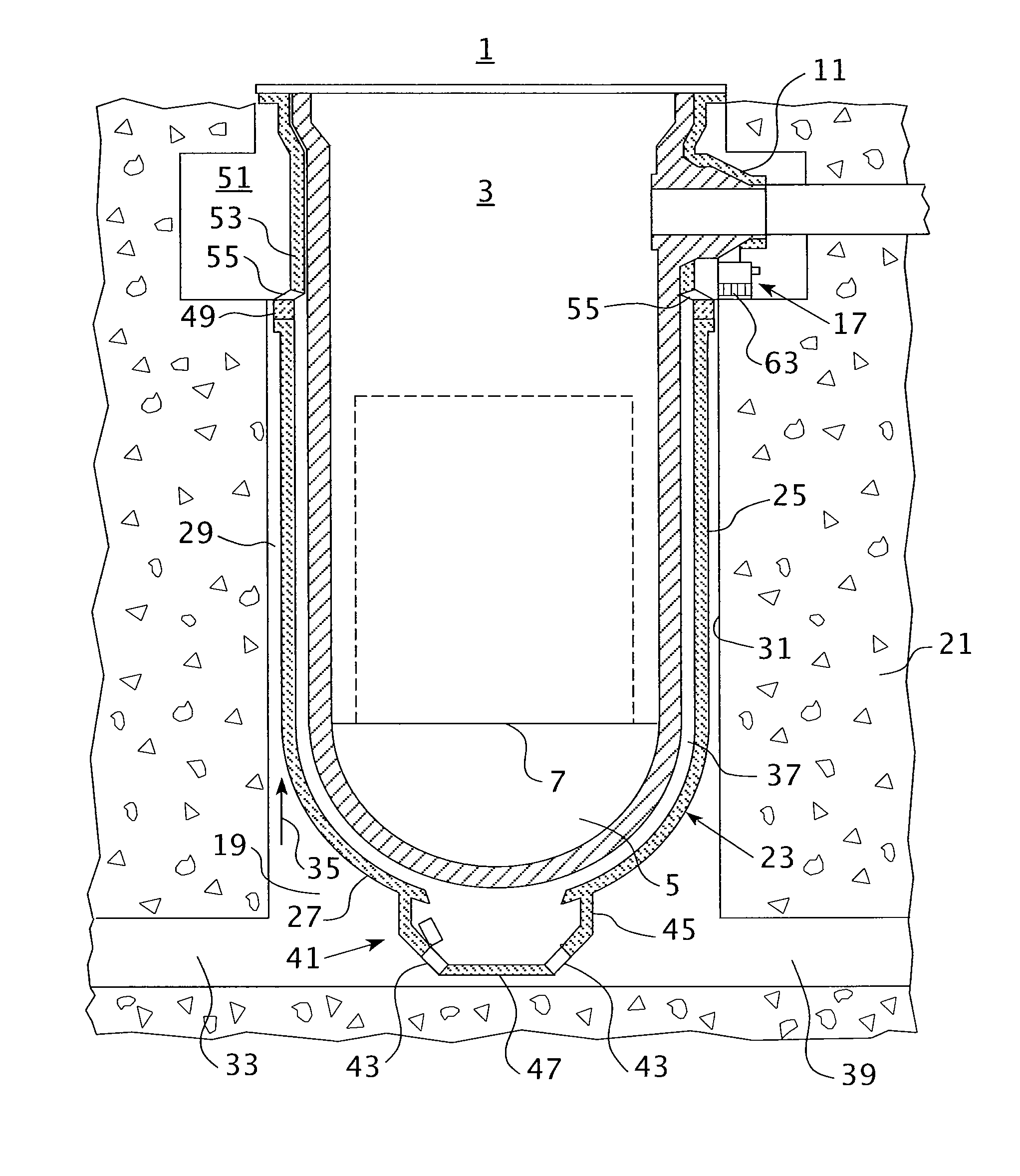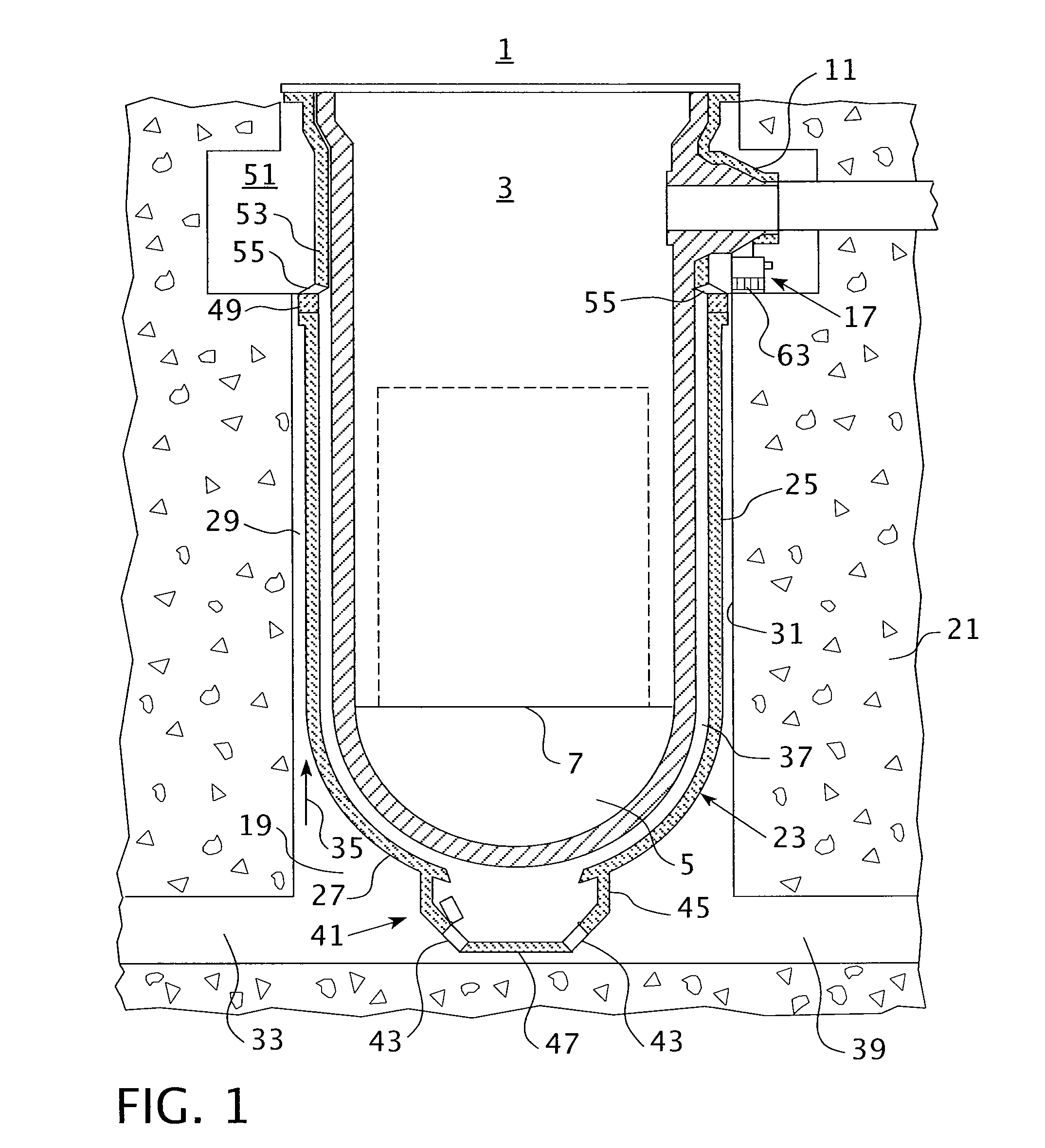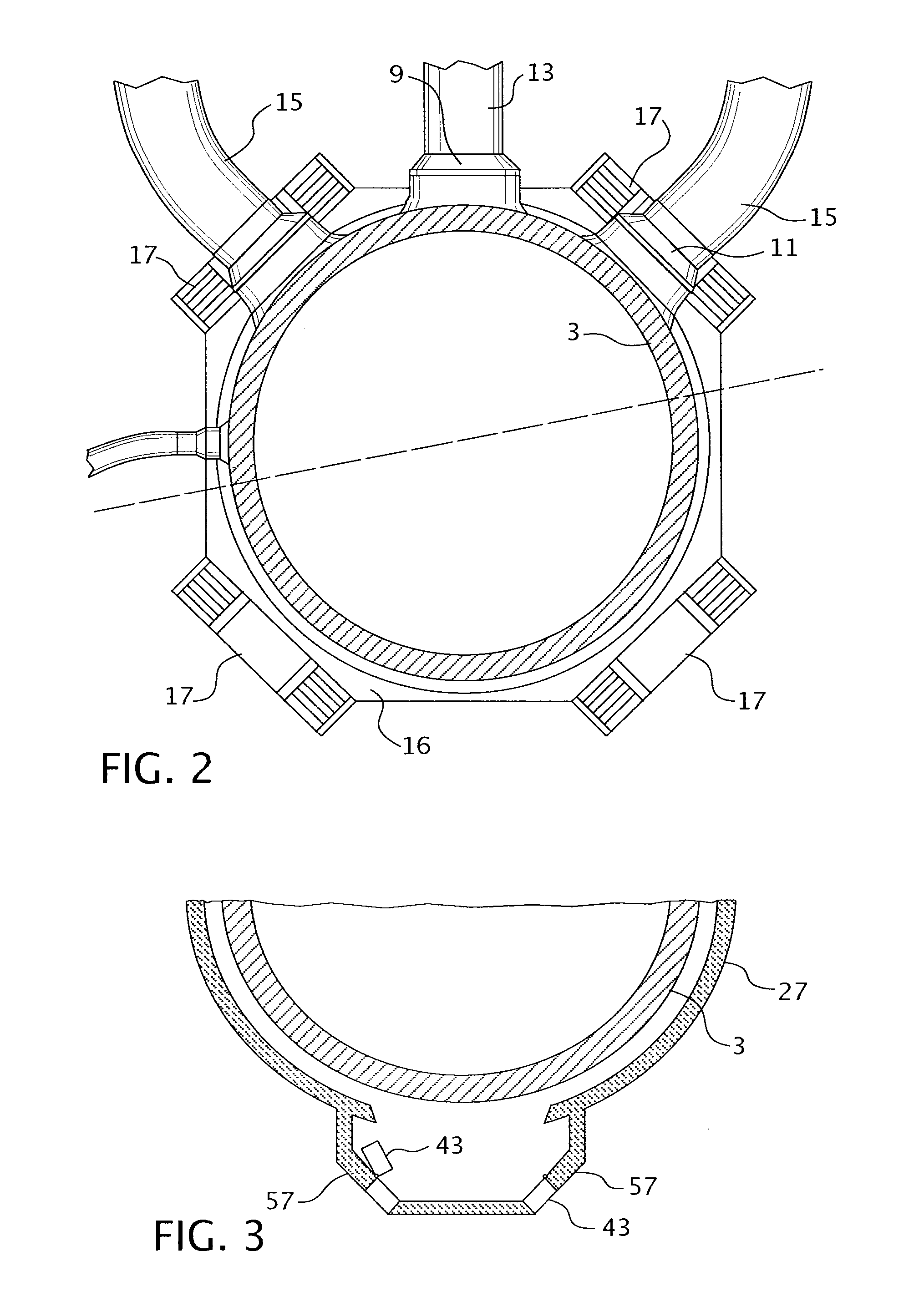Nuclear reactor vessel fuel thermal insulating barrier
a fuel thermal insulation and reactor vessel technology, applied in nuclear engineering problems, nuclear elements, greenhouse gas reduction, etc., can solve the problems of not being able to adequately cool an apib>000/b> pressure vessel in the same area of protection as the described insulation system,
- Summary
- Abstract
- Description
- Claims
- Application Information
AI Technical Summary
Benefits of technology
Problems solved by technology
Method used
Image
Examples
Embodiment Construction
[0023]FIG. 1 illustrates the pertinent portions of a nuclear reactor installation 1 in the form of an advanced pressurized water reactor. The reactor includes an upright cylindrical vessel 3 having a hemispherical lower end 5. The reactor vessel 3 contains a core 7 of fissionable material. As is well known, reactor fluid in the form of light water is circulated through the core. The hot coolant is discharged through hot leg nozzles 9 (shown in FIG. 2) for circulation through a steam generator (not shown) which utilizes the heat m the coolant to generate steam for a turbine generator (also not shown). The coolant is returned to the reactor vessel 3 through cold leg nozzles 1.1. The exemplary plant is a two-loop installation; thai is, the single reactor supplies heated coolant for two steam generators. As illustrated in FIG. 2, each loop includes one hot leg 13 connected to a hot leg nozzle 9 aid two coo! legs 15 connected to cold leg nozzles 11. While FIG. 2 only shows the nozzle arr...
PUM
 Login to View More
Login to View More Abstract
Description
Claims
Application Information
 Login to View More
Login to View More - R&D
- Intellectual Property
- Life Sciences
- Materials
- Tech Scout
- Unparalleled Data Quality
- Higher Quality Content
- 60% Fewer Hallucinations
Browse by: Latest US Patents, China's latest patents, Technical Efficacy Thesaurus, Application Domain, Technology Topic, Popular Technical Reports.
© 2025 PatSnap. All rights reserved.Legal|Privacy policy|Modern Slavery Act Transparency Statement|Sitemap|About US| Contact US: help@patsnap.com



